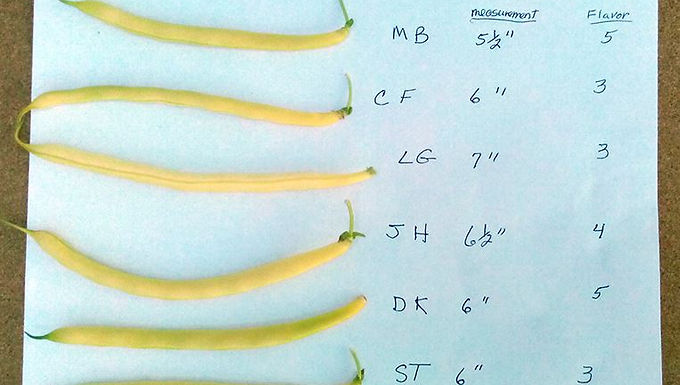
How to Choose the Best Plants –
Master Gardeners Can Help
It’s May and you are thinking about which vegetables and flowers you want to grow in your garden this summer. First, you have to decide what to grow - beans, broccoli, swiss chard, cilantro? But there are several different varieties of each of these plants. Garden stores have so many different varieties on the racks; how do you know what to buy? Also, is May too late to grow these plants from seed? The University of Minnesota Extension Master Gardeners can help you choose.
Julie Harris, Dakota County Master Gardener

It’s May and you are thinking about which vegetables and flowers you want to grow in your garden this summer. First, you have to decide what to grow - beans, broccoli, swiss chard, Cilantro? But there are several different varieties of each of these plants. Garden stores have so many different varieties on the racks; how do you know what to buy? Also, is May too late to grow these plants from seed? The University of Minnesota Extension Master Gardeners can help you choose.
The UMN Extension sponsors Annual Master Gardener Seed Trials to find the best varieties of various vegetables and flowers. In 2024, 298 Master Gardeners in 55 counties around the state, tested 6 different varieties of 8 different plants against each other (6 vegetables and two flower varieties; including one herb). The collective results of the trials are compiled at the end of each growing season and each plant is ranked. Winners are the top performers in each trial. The rankings are published each year in January. This will be the 43nd year of the Seed Trials’ existence, so there is ample data on many varieties to inform the home gardener.

In Dakota County, Master Gardeners manage two Seed Trial Gardens; one in the First Presbyterian Church Community Garden, South St. Paul and one at St. Joseph’s Church in Rosemount. Some individual Master Gardeners also participate by testing plants in their own gardens.

Master Gardeners receive the seeds from the UMN Extension and grow the plants from seed. The plants are planted in the ground or transferred to the gardens in the spring according to planting instructions. Teams of Master Gardeners prepare the soil, plant the seeds or seedlings, water, weed, and monitor diseases and insects on the plants over the summer. Taste tests are performed when the plants are ready for harvest. Data is kept throughout the summer on each plant variety regarding: flavor, disease and insect tolerance, productivity and germination rate. At the end of the growing season, the data is given to the UMN Extension, which compiles the statewide data and produces the annual report.
In 2024, Master Gardeners tested 6 varieties of Swiss chard, Asian long beans, stem broccoli, cilantro, shallots, snacking peppers, helichrysum (strawflowers) and centaurea (bachelor buttons). Complete results of the trials are available here. In 2024, the top ranked plants in each category were:
Vegetables
Asian long beans: Yu Long Noodle Kin – soak seeds overnight before planting outside in mid-May
Shallot: Davidor
Swiss Chard: Bright Lights
Broccoli: Happy Rich – excellent cooked flavor, high yield and minimal stem diameter
Pepper: Cupid
Cilantro: Calypso – Bred to last longer and produce a bigger harvest; direct sow in late May
Flowers
Helichrysum (Strawflowers): Scarlet Choice Double
Centaurea (Bachelor Buttons): Blue Boy

Note: You can find a complete list of all of the seed trials since 1982 at the same site.
Volunteer Master Gardeners around the state, including Dakota County, participate in various projects which improve horticulture and provide gardening information that will be useful to the home gardener. The vegetable and flower trials are one of these projects. Hopefully, you can use this information to grow happy, healthy vegetables or flowers for your enjoyment.
Photo Credit: University of Minnesota; Susan Hickey (1), Robert Hatlevig (2,3), University of Minnesota Extension; Jenna Kahly (4)



